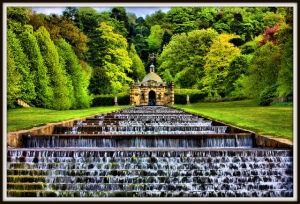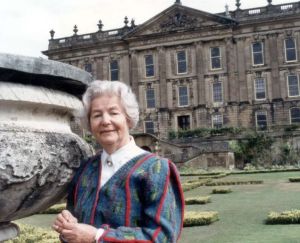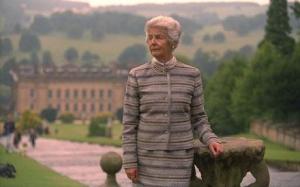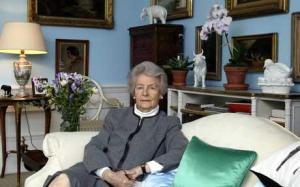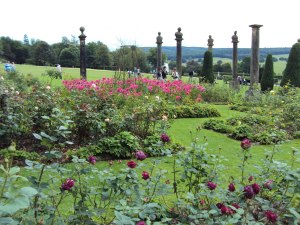John Maynard Keynes, 1st Baron Keynes, CB, FBA (5 June 1883 – 21 April 1946), was a British economist whose ideas fundamentally affected the theory and practice of modern macroeconomics and the economic policies of governments. He built on and greatly refined earlier work on the causes of business cycles, and is widely considered to be one of the most influential economists of the 20th century and the founder of modern macroeconomics. His ideas are the basis for the school of thought known as Keynesian economics and its various offshoots.
In the 1930s, Keynes spearheaded a revolution in economic thinking, challenging the ideas of neoclassical economics that held that free markets would, in the short to medium term, automatically provide full employment, as long as workers were flexible in their wage demands. He instead argued that aggregate demand determined the overall level of economic activity and that inadequate aggregate demand could lead to prolonged periods of high unemployment. According to Keynesian economics, state intervention was necessary to moderate “boom and bust” cycles of economic activity. Keynes advocated the use of fiscal and monetary policies to mitigate the adverse effects of economic recessions and depressions. Following the outbreak of World War II, Keynes’ ideas concerning economic policy were adopted by leading Western economies. In 1942, Keynes was awarded a hereditary peerage as Baron Keynes of Tilton in the County of Sussex. Keynes died in 1946; but, during the 1950s and 1960s, the success of Keynesian economics resulted in almost all capitalist governments adopting its policy recommendations.
Keynes’s influence waned in the 1970s, partly as a result of problems with inflation that began to afflict the Anglo-American economies from the start of the decade and partly because of critiques from Milton Friedman and other economists who were pessimistic about the ability of governments to regulate the business cycle with fiscal policy. However, the advent of the global financial crisis of 2007–08 caused a resurgence in Keynesian thought. Keynesian economics provided the theoretical underpinning for economic policies undertaken in response to the crisis by President Barack Obama of the United States, Prime Minister Gordon Brown of the United Kingdom, and other heads of governments.
In 1999, Time magazine included Keynes in their list of the 100 most important and influential people of the 20th century, commenting that: “His radical idea that governments should spend money they don’t have may have saved capitalism.” He has been described by The Economist as “Britain’s most famous 20th-century economist.” In addition to being an economist, Keynes was also a civil servant, a director of the Bank of England, a part of the Bloomsbury Group of intellectuals, a patron of the arts and an art collector, a director of the British Eugenics Society, an advisor to several charitable trusts, a successful private investor, a writer, a philosopher, and a farmer.
Keynes’s early romantic and sexual relationships were exclusively with men. Keynes had been in relationships while at Eton and Cambridge; significant among these early partners were Dilly Knox and Daniel Macmillan. Keynes was open about his affairs, and between 1901 to 1915, kept separate diaries in which he tabulated his many sexual encounters. Keynes’s relationship and later close friendship with Macmillan was to be fortuitous, as Macmillan’s company first published his tract, Economic Consequences of the Peace.
Attitudes in the Bloomsbury Group, in which Keynes was avidly involved, were relaxed about homosexuality. Keynes, together with writer Lytton Strachey, had reshaped the Victorian attitudes of the Cambridge Apostles: “since [their] time, homosexual relations among the members were for a time common”, wrote Bertrand Russell.The artist Duncan Grant, whom he met in 1908, was one of Keynes’s great loves. Keynes was also involved with Lytton Strachey, though they were for the most part love rivals, and not lovers. Keynes had won the affections of Arthur Hobhouse, as well as Grant, both times falling out with a jealous Strachey for it. Strachey had previously found himself put off by Keynes, not least because of his manner of “treat[ing] his love affairs statistically”.
Political opponents have used Keynes’ sexuality to attack his academic work. One line of attack held that he was uninterested in the long term ramifications of his theories because he had no children.
Keynes’ friends in the Bloomsbury Group were initially surprised when, in his later years, he began dating and pursuing affairs with women, demonstrating himself to be bisexual. Ray Costelloe (who would later marry Oliver Strachey) was an early heterosexual interest of Keynes. In 1906, Keynes had written of this infatuation that, “I seem to have fallen in love with Ray a little bit, but as she isn’t male I haven’t [been] able to think of any suitable steps to take.”
Throughout his life, Keynes worked energetically for the benefit both of the public and his friends; even when his health was poor, he laboured to sort out the finances of his old college, and at Bretton Woods he worked to institute an international monetary system that would be beneficial for the world economy. Keynes suffered a series of heart attacks, which ultimately proved fatal, beginning during negotiations for an Anglo-American loan in Savannah, Georgia, where he was trying to secure favourable terms for the United Kingdom from the United States, a process he described as “absolute hell”. A few weeks after returning from the United States, Keynes died of a heart attack at Tilton, his farmhouse home near Firle, East Sussex, England, on 21 April 1946 at the age of 62.
Both of Keynes’s parents outlived him: his father John Neville Keynes (1852–1949) by three years, and his mother Florence Ada Keynes (1861–1958) by twelve. Keynes’s brother Sir Geoffrey Keynes (1887–1982) was a distinguished surgeon, scholar, and bibliophile. His nephews include Richard Keynes (1919–2010) (a physiologist) and Quentin Keynes (1921–2003) (an adventurer and bibliophile). His widow, Lydia Lopokova, died in 1981. Keynes had no children.




















